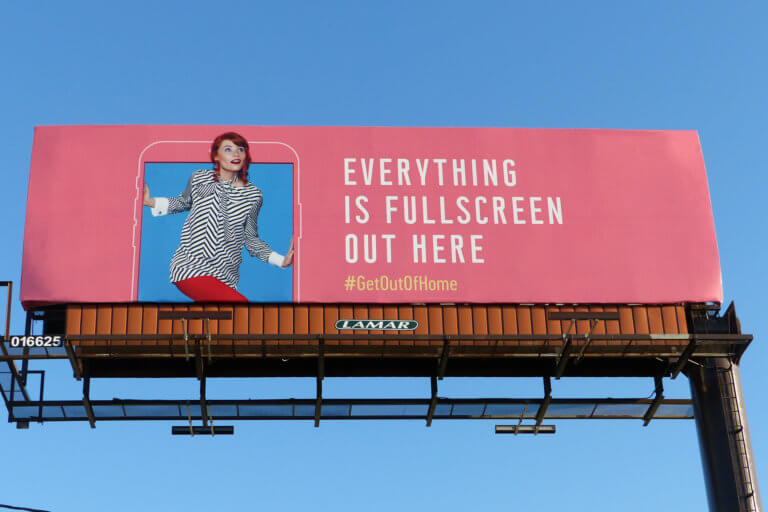
As we approach the new year, it’s safe to say that social media platforms have become an integral part of our daily lives. Now more than ever, businesses are depending on social media to thrive via e-commerce sales. Consumers are relying more on social media to stay updated, interact, and make purchases. According to a report by Datareportal, there is a significant increase in online and digital activities during the lockdown period. More than half of the world now uses social media, 4.57 billion people are now using the Internet with 346 million new users joining within the last 12 months. While the lockdown has crippled the economy, the high number of new global users can mean new opportunities for businesses to grow. Findings from the same study found that 99% of total social media users use their mobile phones to access the platforms.
So how does this relate to OOH advertising? The unique advantage that OOH ads have on social media is the ability to become an interactive post on a consumer’s feed. A controversial OOH ad can spawn a never-ending online debate and a creative one could generate enough buzz to make it go viral. OOH advertisements have the power to become memorable mentions for years to come, just like the examples we will see in this article.
The Hashtag Era
Nowadays, hashtags are pretty much everywhere on social media, thus the symbol “#” has become an embodiment of social media. Hashtags first emerged through twitter in 2007 to group conversations together as a way to help users communicate better. However, at the time Twitter did not envision the popularity it would soon receive. The first hashtag to ever go viral was #sandiegofire in October 2007, where the value of the hashtag came in handy, as journalists needed a way to stay updated on the fires that were spreading quickly. The story of the birth of the hashtag emphasizes the importance of user-generated content in our world today, which explains why other social platforms decided to adopt the trend as well. They allowed people to share their lives and group conversations together, but as the trend grew, their value and functions also expanded. Hashtags are now used for search purposes and keywords for marketers on social media but beyond that, they have become an extension of an ad – transforming it into an interactive medium for consumers.
Hashtag Activism in OOH Campaigns
Advertisers have integrated the hashtag in their OOH advertisements for several reasons. Taglines or mottos are being replaced by the hashtag, directing the by passers’ attention to one bold phrase as opposed to a full sentence. Established brands with a well-known catchphrase can simply add a hashtag that references their famous tagline.
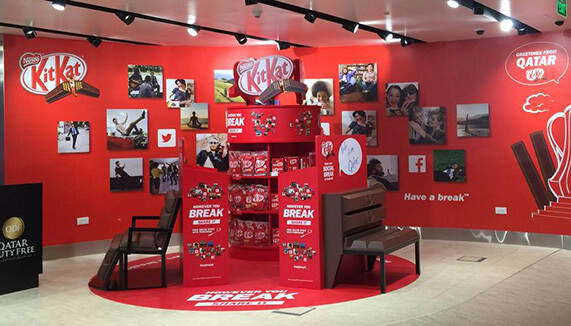
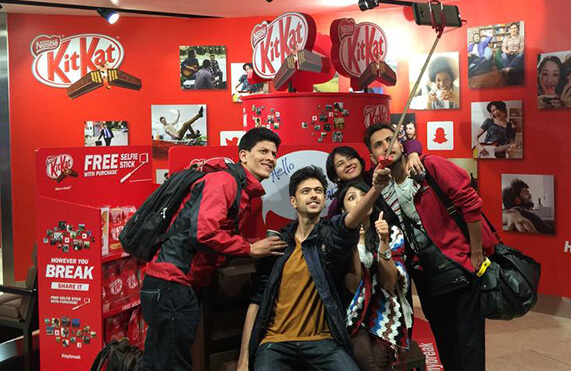
For example, Kit-Kat’s famous “have a break, have a Kit-Kat” slogan was used as a hashtag that read #mybreak. Kit-Kat’s consumers used the hashtag “#mybreak” as an opportunity to share with others how they spend their break time. Kit-Kat used an interactive OOH booth at an airport designed with 4 benches that resembled the chocolate bar. Each bench had a different theme – a ‘Social Sharing Break’ bench with a whiteboard to write personalised messages, a soft ‘Relaxing Break’ bench with a footrest, a ‘Music Break’ bench with piano key seats, and a ‘Sports Break’ bench with a football and net. After making a purchase, passengers were then encouraged to capture their airport ‘break’ moment with a dedicated Kit-Kat selfie stick and share it using the hashtag #mybreak. This is a great way to bring a still billboard to life, as it allows consumers to express themselves and communicate with one another. It also provides an added value to brands and advertisers who aspire to have consumers use their hashtag to ensure a successful interactive campaign.
In some rare cases, the roles are reversed, and the power of the hashtag makes such a great impact that a billboard is created as a result of a successful movement. This is what happened when the hashtag #ilooklikeanengineer was born as an example of sexism in the tech world that took the Internet by storm. Social media is truly capable of allowing one voice to resonate with millions in order to address an important cause. On August 1st,2015, a female engineer named Isis shared her story online about a time when she received negative feedback on social media, because people did not believe she was a real engineer after seeing her posing for an ad for the company she works for, Onelogin. She decided to create a hashtag on social media to bring attention to the issue. As more social media users followed her example, the hashtag quickly trended on Twitter.
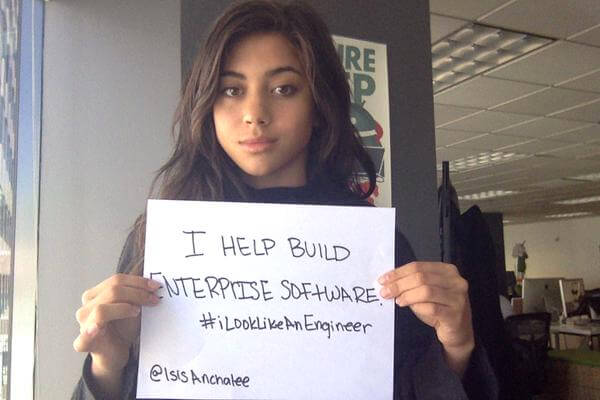
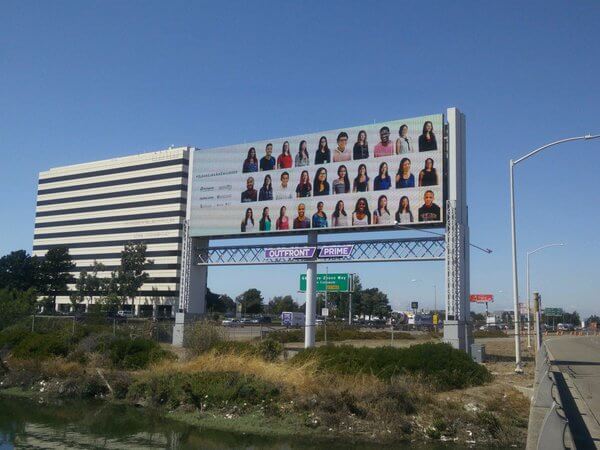
The movement grew so much that an Indiegogo campaign was implemented to raise funds to put billboards up around the Bay area to battle this issue. The campaign was so successful that the billboard displaying a Facebook photo album of portraits with the hashtag, stayed up from September through October. The hashtag generated over 16,000 photos on Instagram.
OOH and Social Media
In our world today, the Internet is highly saturated with advertisements of companies, brands and websites. Consumers tend to get overwhelmed with the massive variety of options and find it difficult to trust new brands and companies they find online. Consumers want to know if the brand they are hoping to purchase from online is a legitimate company, therefore internet users look for reviews about brands they have not heard of, with hopes that a fellow consumer can validate the brand. For these reasons, incorporating OOH in the media mix gives brands a sense of verification in the minds of consumers, allowing them to gain trust in such brands. Consumers are more likely to search for a brand online after seeing it as an OOH advertisement. A study by Nielson in 2017 on ads driving online activity found that online activations, including search, Facebook, Twitter and Instagram activity, generated by out-of-home advertising indexes at nearly three times the rate expected, given its relative ad spend. For example, outdoor media accounts for 22% of gross search activations generated by television, radio, print, out of home and banner ads combined. However, it only accounts for 7% of the total combined advertising costs. Another study, named Standing on the Shoulders of Giants, measured the power of OOH ads across 62 cases and non-users of OOH across 109 cases and found that brands which allocated 15% or more of their media budget towards OOH benefited from a significantly greater social media boost than those brands who hadn’t. In terms of effective channels, search engine numbers were the most improved as a result of OOH brand use, increasing by 80%, followed by social media at 56% and online by 31%.
OOH and Smartphones
The value of social media was propelled by the introduction of smartphones, allowing users to be able to hold their social media platforms in the palm of their hands. This had a major effect on the way we use social media today. We no longer need to wait to get home to upload our photos from our laptops or computers, and the ability to instantly share “in the moment” events has opened a whole new world of possibilities for brands. OOH billboards are no longer constrained to their location, they now have the chance to reach the world via social media. A report by Nielson in 2020 on OOH Advertising, showed that nearly half of viewers with smartphones (45%) have interacted with a digital mobile billboard via SMS, URL, hashtag, or scanned a QR code in the past year. OOH and social media combined have unique components to influence consumer purchase behavior.
OOH Ads that went Viral
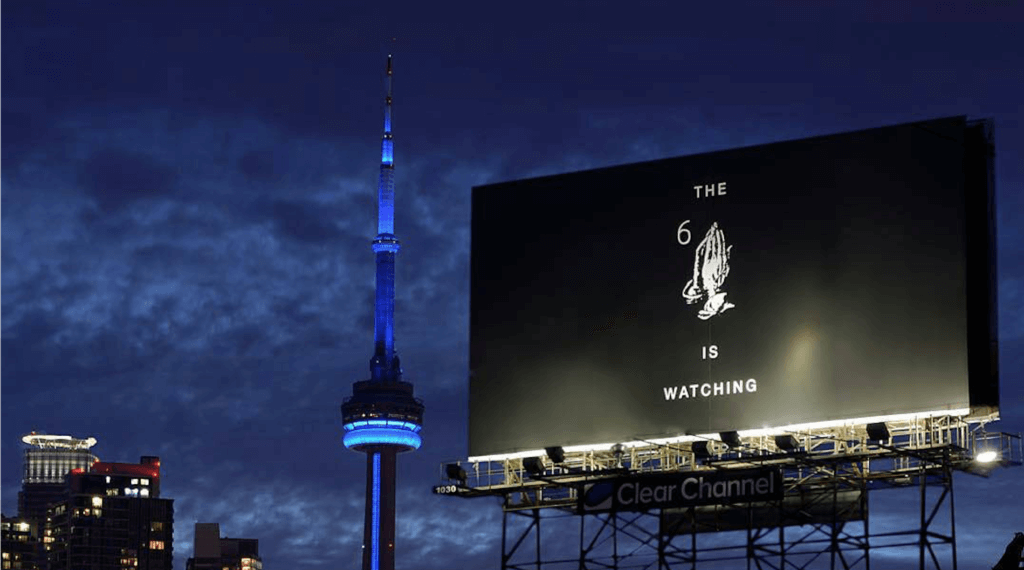
In the city of Toronto, a mysterious billboard that read “The 6 is watching” was executed by Universal Music Canada for Toronto-born rapper Drake. The billboard sparked social media buzz as fans were able to recognize Drake’s iconic brand image through the praying hands symbol and the number 6 as a representation of himself and where he came from. The billboard was a message to let his fans know that the awaited album, “Views From the 6”, would be coming out soon. In 24 hours, the stunt went viral as fans shared, commented, tweeted and retweeted the mysterious billboard photo, eager to find out the meaning behind the ad. The choice of medium made it possible for the ad to go viral, as the public billboard offered fans the visual content they needed to share on social media. In addition to that, the compelling message excited fans to crack the code and analyze the true meaning of the message, provoking online conversations. The campaign earned millions of impressions on Twitter, Facebook, and Instagram.
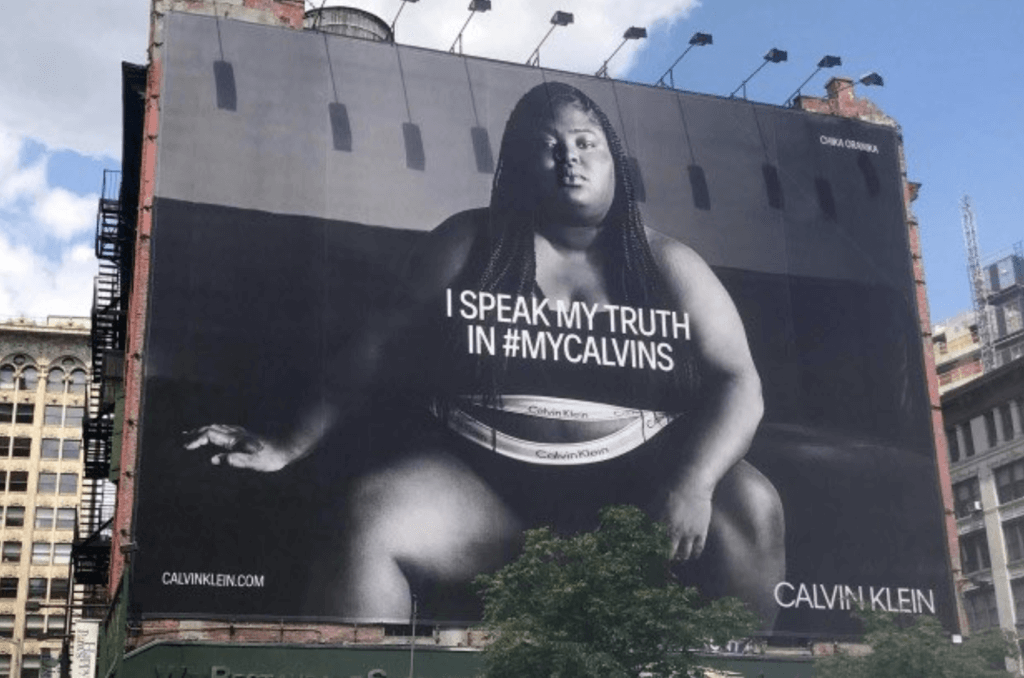
Calvin Klein’s “I Speak My Truth” campaign with the hashtag #mycalvins, featured a billboard of rapper Chika Oranika in Manhattan’s Soho neighborhood. The ad sparked a lot of controversy over the weight of the rapper posing – creating heated debates on how the ad was promoting obesity and other weight related diseases. Like any debate, there were two sides to the argument, as some consumers embraced Calvin Klein for their approach to inclusivity. Calvin Klein’s Chief Marketing Officer told the New York Post, “We believe the most compelling and engaging campaigns are those that embrace not just diversity of race, body type, sexual orientation or gender identity, but also diversity of opinion and experience.” The statement makes it clear that the motive of the ad was not to please everyone but to trigger different opinions and embrace them.

A designer by the name Jenni Kayne, based in Los Angeles, decided to endorse famous social media fashion influencers for her campaign – “Find Your Uniform”. OOH posters were displayed throughout New York City, where Jenni Kayne had recently opened a brick-and-mortar store. The idea behind the ad was to depict authentic women in real life. As seen in the billboard, influencer Tylynn Nguyen was dressed in simple everyday attire while breastfeeding her newborn. The billboard went viral on social media as women took this opportunity to spread awareness on breastfeeding by using the hashtag #normalizebreastfeeding and #findyouruniform. The hashtags born from the billboard caught the attention of celebrities and influencers who used their platform to praise the ad by sharing it on their Instagram feed and stories.
The Bottom Line
When a consumer’s attention is caught by an OOH advertisement, they have the ability to instantly take a photo and share it immediately via their smartphone. The OOH advertisement can act as the most effective social media influencer, as studies have shown the strong effect it can have on consumer behavior. Millennials and generations Z and X have grown accustomed to sharing details of their everyday life to a wide online audience, so being exposed to an ad that gives them the chance to do so will naturally spark a desire to join the conversation. Incorporating a hashtag or a mention using the @ symbol allows consumers to not only view an ad the traditional way, but to participate in its success. An OOH ad with a strong social sharing factor paired with a creative and innovative design can be the perfect recipe for a campaign to go viral.


